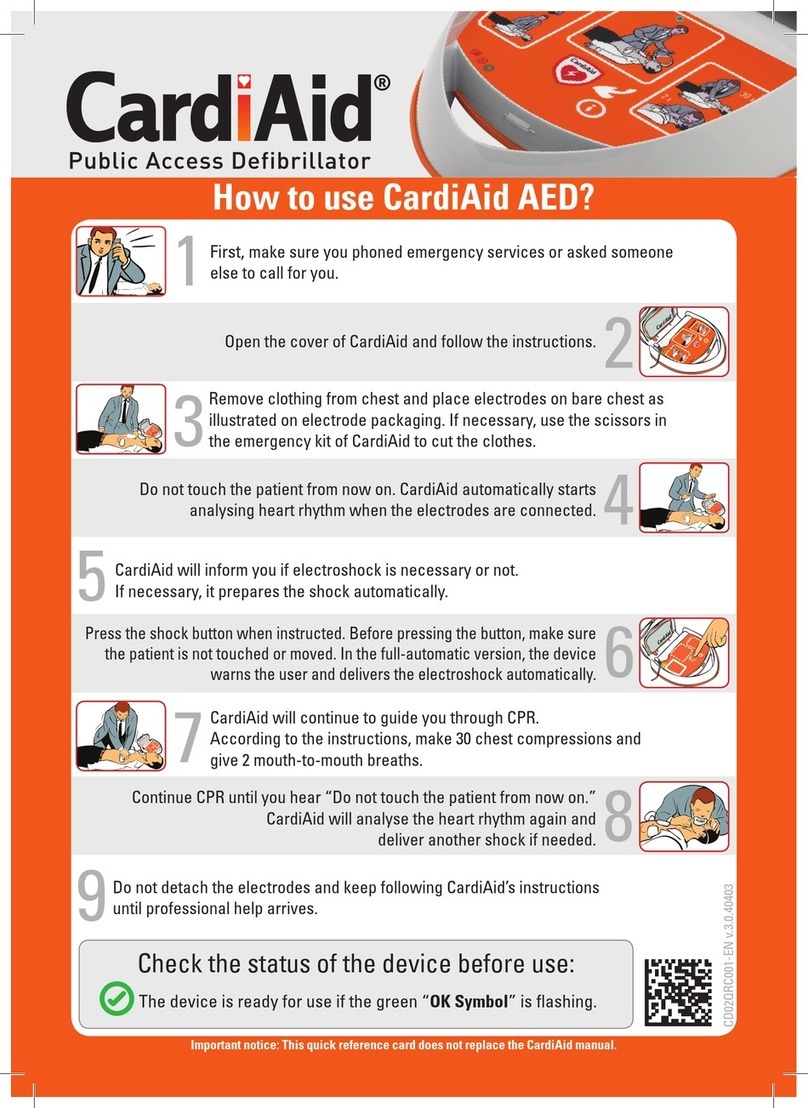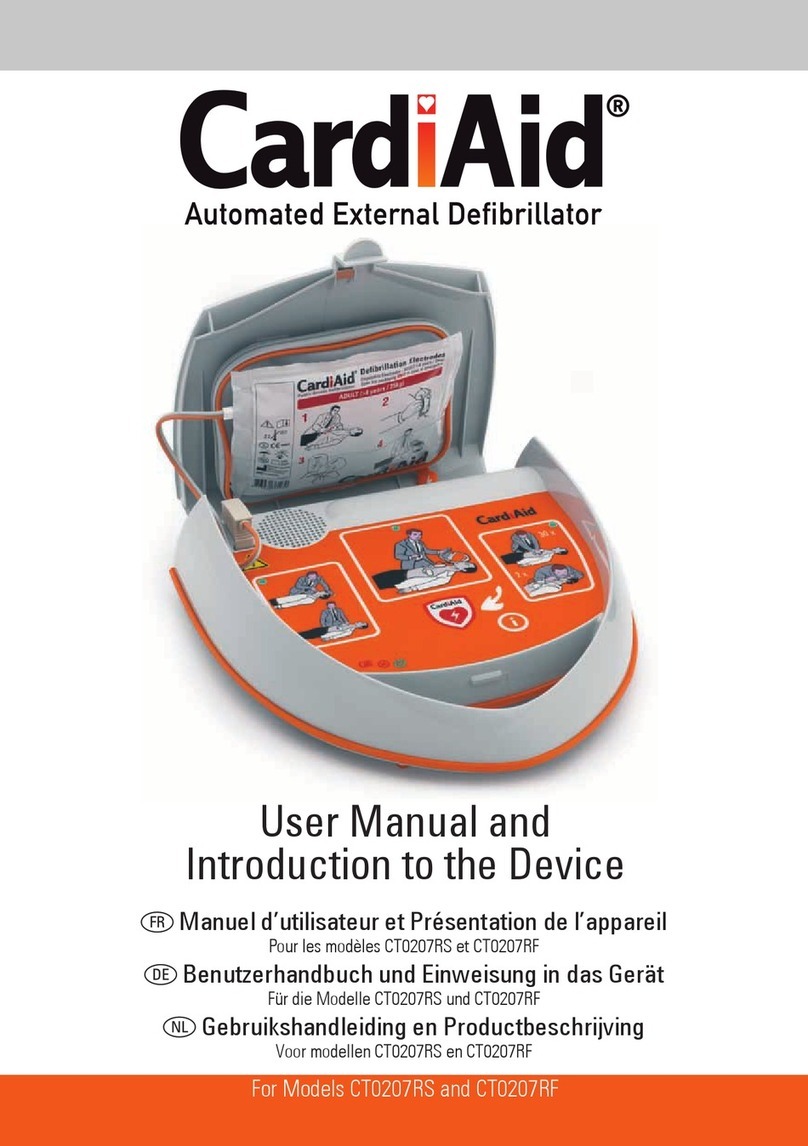
6
ENGLISH
1.1 Intended Use
CardiAid is a public access defibrillator (PAD), i.e. an automated external defibrillator (AED) which is
available for public use. CardiAid can be used for the resuscitation of patients older than 8 years (>25
kg) with standard electrodes and patients 1 to 8 years old (<25 kg) with special paediatric electrodes.
If a patient displays symptoms of a cardiac arrest due to ventricular fibrillation or ventricular
tachycardia, CardiAid can be used to deliver the required defibrillation therapy directly on the site of
the emergency. The user is guided through the resuscitation process with clear and comprehensible
instructions. The device automatically records and analyses the ECG signal and, if required, prepares
itself to deliver a shock to the patient.
The process by which the shock is delivered varies according to the version of CardiAid being used:
• In the semi-automatic version (CT0207RS), the user is asked to press a button to release the
shock.
• In the full-automatic version (CT0207RF), the device warns the user not to touch the patient and
then proceeds to releasing the shock automatically.
Important! CardiAid should be used only for the purposes described above.
1.2 User Qualification
In most countries, public access defibrillators (PAD’s) like CardiAid can be used by any rescuer who
is present when a person has sudden cardiac arrest. In some countries, CardiAid can be used only by
rescuers who are qualified with training in basic life support, use of automated external defibrillators
and use of CardiAid.
1.3 Description of the Functions
CardiAid is used to deliver defibrillation to a person having sudden cardiac arrest due to ventricular
fibrillation or ventricular tachycardia. It analyses the heart rhythm of the patient and decides whether
an electroshock is necessary or not. If one is necessary, it prepares the shock automatically. The shock
delivery method depends on the model used (semi-automatic or fully-automatic). After the shock (or
when no shock is advised), CardiAid directs the rescuer to basic life support (CPR) and guides the user
with verbal instructions and metronome. During the incident, duration of use and number of shocks
delivered can be heard by pressing “info-button”. CardiAid also records the ECG and event data in its
internal memory and this data can be obtained from the device as a report. Below, the functions of the
devices are explained briefly, and also will be explained in further detail through this user manual.
Visual and Acoustic Instructions for the User
CardiAid is designed to guide the user with verbal instructions together with
pictures, flashing lights of different colours at the same time, thus maximizing
the performance. CardiAid starts verbal instructions as soon as its cover is
opened and guides the user step by step through the resuscitation process.
Simultaneously, clear images support the verbal instructions. The pictures are simple and explanatory;
the flashing lights are designed to emphasize the pictures and buttons, with white flashing light
showing the stage of the process and red flashing light only indicating the shock button. In this
way, all steps are ensured to be implemented accurately even if the user has limited knowledge or
experience in resuscitation.
1. Introduction to the Device





























